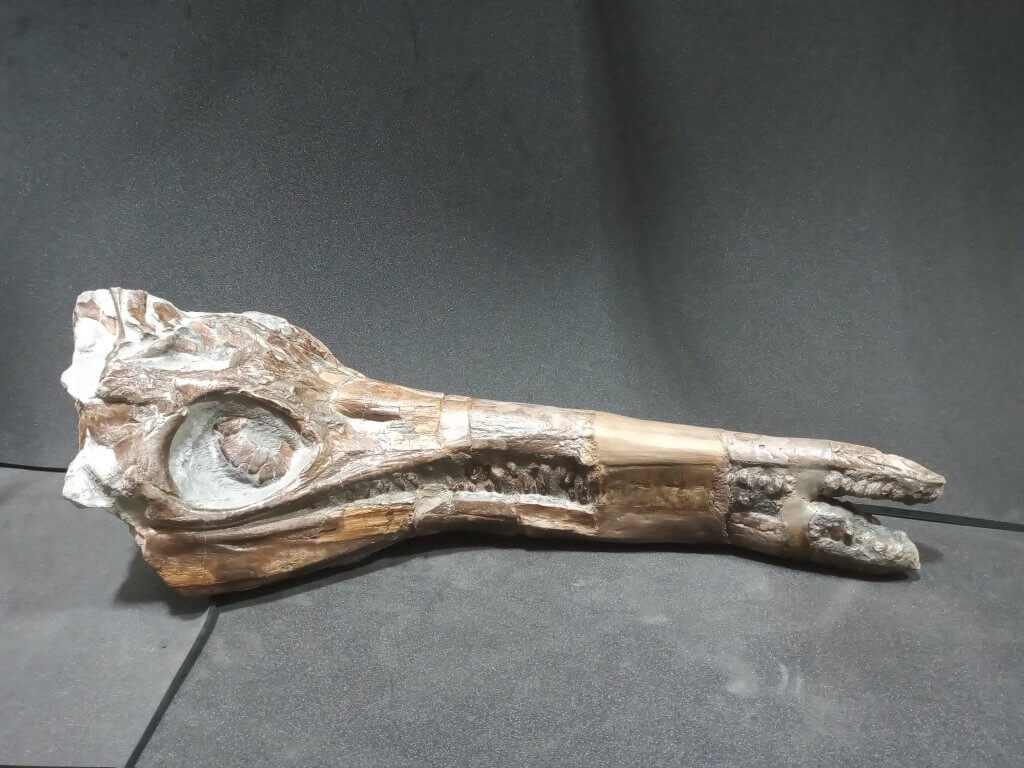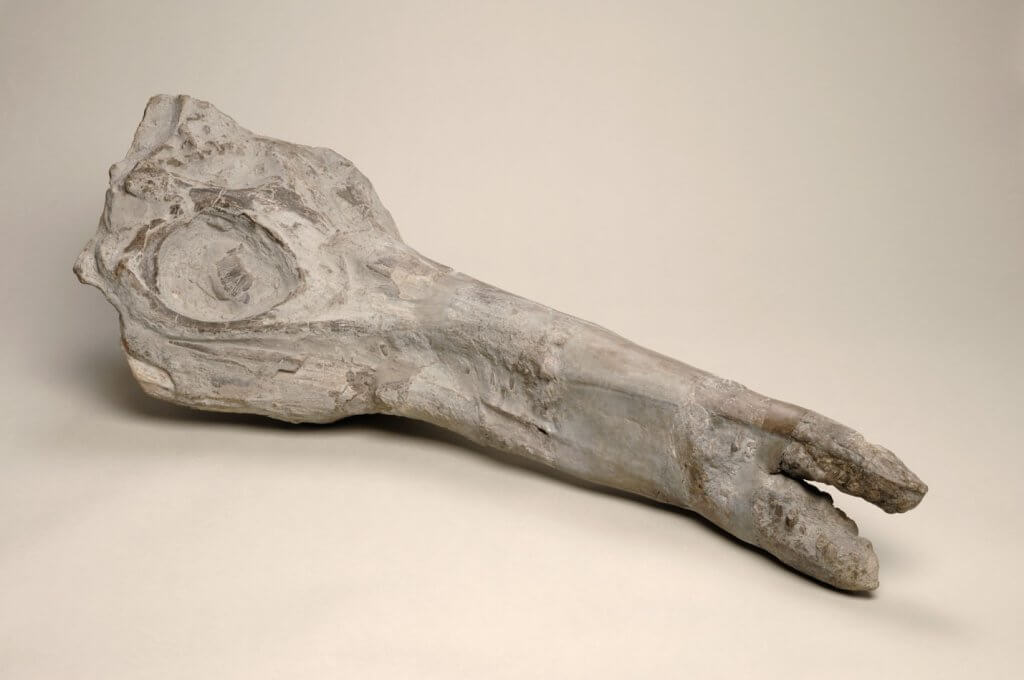A prehistoric fossil found in a Warwickshire quarry is set to go back on display in Coventry after extensive conservation work.
The ichthyosaur dates back hundreds of millions of years when Coventry and Warwickshire was beneath a Jurassic sea.
The specimen was discovered in 1933 in Harbury Cement Quarry and has been part of Herbert Art Gallery & Museum’s collection since the early 1960s.
In 2018 a palaeontologist recommended the specimen would benefit from further work to remove the rock matrix to reveal more of the fossil underneath. Now, with the arrival of Dippy, the Herbert has found a sponsor to allow the work to be completed.
So this month, the ichthyosaur has been receiving some much needed restoration work by conservator Nigel Larkin which has outlined a flurry of new details.
It will now go back on display as the central piece in the museum’s Warwickshire Jurassic Sea display alongside Dippy in the Covered Court as part of the Dippy in Coventry exhibition this month.
Sponsor James Thomas, explained why he wanted to help by donating funds to pay for the conservation work.
He said: “I have always been a fan of dinosaurs and prehistoric life so was delighted when the Herbert announced Dippy was coming to Coventry. I wanted to donate to support the museum’s collections and hope that the conservation work will uncover more information about the Herbert’s star ichthyosaur.
“It’s particularly meaningful for me as the money I’m donating was left to me by grandmother and great-aunt; I’ve no doubt they would be delighted that it’s helping me follow a passion of mine.”
Curator Ali Wells said: “I am delighted at the opportunity to discover more about one of our specimens. Parts of the creature’s teeth, eye ring and skull are visible but the conservation work has brought it to life even more.
“And on top of that there’s the opportunity to have the fossil scanned by Warwick Manufacturing Group to reveal what’s inside, something that was not possible when the specimen first arrived at the museum in 1961.”
When the specimen, along with tens of others, was first found at the quarry 90 years ago a well-known Coventry naturalist and member of the Coventry and District Natural History and Scientific Society, EF Nicholls, arranged for it to be moved from the quarry to Coventry to go on display.
Nicholls’ son was given the task of transporting the skull across Warwickshire to Coventry using his push bike.
But the specimen was heavy, and the young man, tiring of the weight on the saddle of his bike, offloaded his cargo in a ditch at Princethorpe. On returning home he was severely reprimanded by his father and made to return to the ditch the next morning and complete the fossil’s journey to Coventry, where it was placed in the Field Club room at Upper York Street.
With the return of the ichthyosaur comes an exciting new virtual reality experience based around Coventry and Warwickshire’s Jurassic-period marine life.
The experience sees participants travel through time and experience the power of interactive storytelling while immersing themselves in the 175 million year journey of the skull. Trace its route to Coventry from discovery in a quarry back to this giant marine reptile swimming around Warwickshire’s Jurassic seas.
Find out more about the VR experience on the Herbert’s website or find out more about Warwickshire’s Jurassic sea here.
Ichthyosaur facts:
Ichthyosaurs are not dinosaurs, but their sea-based cousins, also known as marine reptiles. They lived in the sea and came to the surface for air.
Ichthyosaurs are extinct and looked similar to modern dolphins, although they are not related. They hunted sea creatures such as ammonites and fish.
Ichthyosaurs had large eye sockets and special bones, called a sclerotic ring, which helped to protect the eye from water pressure at depth. Different species ranged from one to 20 metres long.
Local facts
The Jurassic Period began about 200 million years ago and lasted for around 55 million years. Dippy lived towards the end of the Jurassic, about 150 million years ago. This display looks at what Warwickshire was like at the start of the Jurassic.
At the beginning of the Jurassic, Britain was further south than it is now. Much of England and Wales were covered in warm shallow seas, including Warwickshire. These seas were filled with marine life, such as shellfish, reptiles and squid and snail-like creatures from the cephalopod family.
Several complete ichthyosaur skeletons have been found in Warwickshire.



